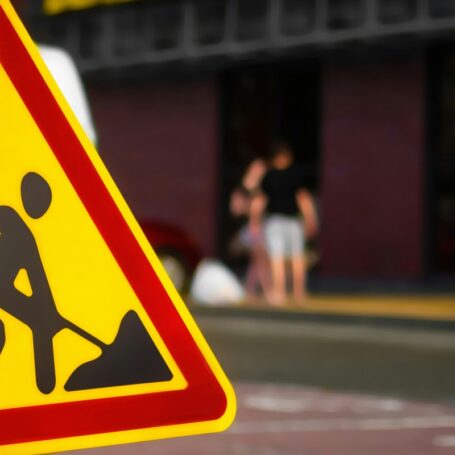Has Digital Open Access Made Book Chapters Comparable to Academic Journals?

Ten years ago, the distinguished Oxford psychologist Dorothy Bishop looked carefully at the level of citations she had garnered for those chapters she had written in edited books (all print volumes with paywall access) compared with articles that she had published in journals. She found no competition in their relative visibility, bluntly concluding: “Quite simply, if you write a chapter for an edited book, you might as well write the paper and then bury it in a hole in the ground.” This damning judgment was always focused most specifically on psychology, and in fact book chapters are well cited in more qualitative social sciences, as well as in many humanities. In 2013, chapters in books accounted for more than one in eight citations in five disciplines (sociology, media studies, history, geography and law) and nearly a quarter of citations in philosophy.

Yet there were also strong across-the-board reasons for Bishop’s assessment, particularly for publishing models that relied on print, given the high prices of academic books put them beyond the reach of most people (and many institutions). Chapters in print (plus paywall access to digital books) were incredibly hard to find out about, before they were published and even afterwards. Many legacy publishers did not even list the chapter contents or authors in their flyers, emails or enduring catalog entries for edited books, concentrating only on the book blurb and editors.
So, unless you chanced to find the book while browsing the publisher’s bookstall at a conference, or in a top-of-the-range academic bookstore, you would never know that a particular chapter even existed. (And good book shops are now few and far between – but see the great LSE Review of Books city guides). Edited books from legacy publishers also lagged behind all their other books in moving from paper-only to digital publishing.
As legacy publishers put their edited books online, the invisibility of book chapters slowly and only partially decreased. Whereas around 70 percent of journal articles are now open access (less in the social sciences and humanities still), most chapters in books can only be made available in pre-final typescript forms on the author’s own websites, and perhaps institutional repository – both hard to find. Even this is mostly feasible only after multi-year embargo periods, making it impossible for authors to publicize their own work in timely ways. So, multiple restrictions remain on authors’ abilities to promote their own chapters via social media because the text is just not open access (apart from occasional sample chapters or brief time-limit-after-publication open access used by publishers in short-lived efforts to publicize their volumes). Many nominally digitally available chapters for paywalled books are also only available within whole-book PDFs or in library eBooks, where digital rights management prevents downloads.
Figure 1: How digital open access transforms the visibility of chapters in edited books
| Digital access | Print only | ||
|---|---|---|---|
| Criteria for assessing visibility | Chapters in open access edited books | Chapters in ebooks with only paywall access | The ancient regime – chapters in print-only books |
| How can academic or other readers first learn that the chapter exists and its contents? | The OA press publicizes the book and each chapter’s contents on its own site and other sites. It puts up metadata and other details on World Cat etc. Both the press and authors themselves use social media/blogs and email to disseminate the published chapter full text as widely as possible. | The publishers’ emails and flyers might list the full chapter contents of online books. Their social media messages generally cover only the whole book. Very few reviews cover more than a selection of chapters. Reviews come out 18 to 24 months after publication, when publisher is no longer actively promoting the book. | Readers would need to come across a physical copy of the book while browsing in a bookstore or at a publisher’s bookstall at a conference – both very unlikely, even in Year One. Many legacy publishers would not even list all chapter contents or authors on the catalog pages or even in emails or flyers about the book. |
| How can readers read the full chapter text? | Download the whole chapter or book instantly and free from any phone, tablet or PC across the world. | Get access to a digital version of the book or chapter in an (elite) university library. Buy the whole book as ebook (or in print) or buy the whole ebook on Kindle. | Buy the whole book (online or via book ordering). Or get a university library to buy the whole book |
| Can the chapter be accessed on its own? | Yes, the chapter can usually be downloaded on its own in one click from any many digital open access presses. Some publishers still make available chapters only as part of a whole book (e.g., those using only OAPEN for digital access). | Sort of. Paywall downloads of single chapters may be offered (at high cost). Mostly a library or the reader needs to buy the whole book. | No, not at all. |
| How is the chapter made visible on a continuing basis to the academic community? | The OA publisher hosts the chapter permanently on their site – and puts up the complete book on extra sites like OAPEN and Google Books. Authors can put up multiple chapter copies on their own ORCID, institutional repository, ResearchGate, Academia.edu and Mendeley sites. | Paywall and print books may both stay in online catalogs only for one year, with abbreviated entries thereafter. After a publisher’s embargo period (often multi-year) an author may be allowed to put up a pre-edited version only on a personal website, and/or an institutional repository – both very hard for readers to find (so-called ‘green’ OA). | |
| Can the author promote the full final text to readers, and when? | Yes. Authors can use social media/blogs to advertise the chapter. Authors can disseminate the final chapter version free at any time from publication onwards. | No. Even after a publisher’s embargo period (often multi-year) an author is unable to disseminate the final published version of their own text. | |
| Can the chapter be easily included by teachers on online reading lists using Moodle, Blackboard, etc.? | Yes. The chapter can be instantly uploaded to lists using DOI or permanent URL. Students can individually download it, exactly as with journal articles. | Not easily. Even if a library has the book, students may have to access the whole book and find the right chapter. | No. Teachers may be able to get libraries to pay for photocopies of the chapter (often once a year only, and with weeks/months’ notice). Libraries also rarely ordered more than one copy of edited books. |
| Can readers adjust the font size etc to facilitate accessibility of the text? | Yes, any good digital open access press will usually make available Kindle, and epub versions. | To some extent. Many legacy publishers still make open access chapters available only within whole book PDFs. Some make chapter PDFs available. | No. It is what it is. |
| Does the chapter have its own DOI? | Yes, usually from a good digital OA press. | Yes, mostly now from the bigger legacy publishers. | Rare. Some legacy presses may still only have a DOI for the whole book. |
However, digital open access publishing chapters in books are every bit as individually visible and useable for academic and other readers as are ‘gold’ open access journal articles, as Figure 1 details. Any good digital open access press will implement a full communications plan for each edited book, and the best sites will make every chapter permanently available on its own separate page (e.g. see this example). Authors can then easily tweet, use social media, blog, email and otherwise disseminate links to their chapter’s full text out to everyone interested, and they can keep on doing so regularly thereafter. Being individually downloadable also means that digital open access chapters are just as useable in Moodle, Blackboard or other open educational resources as journal articles. Academics can easily add them to any reading list, and students can access them in one click without having to navigate any intermediate or library pages.
Of course, just as with journals, much depends on how coherently the chapters in an edited book fit together, who the editors are, how good peer review is for the book and how intensively chapters are edited to fit together and achieve good style. These factors can all help create a ready-made and specific online community for edited book chapters, replicating many of the community-circulation benefits previously confined to journals. And whereas journal publication takes years in many disciplines, so that final articles often become ‘tombstone’ markers for where the focus of debate was four years ago, digital open access publishing can cut these delays and allow timely publications on new topics and academic approaches. These features have enhanced the already well-known capacity for edited book chapters to tackle just-emerging topics and radically innovative methods earlier than journals.



























































































